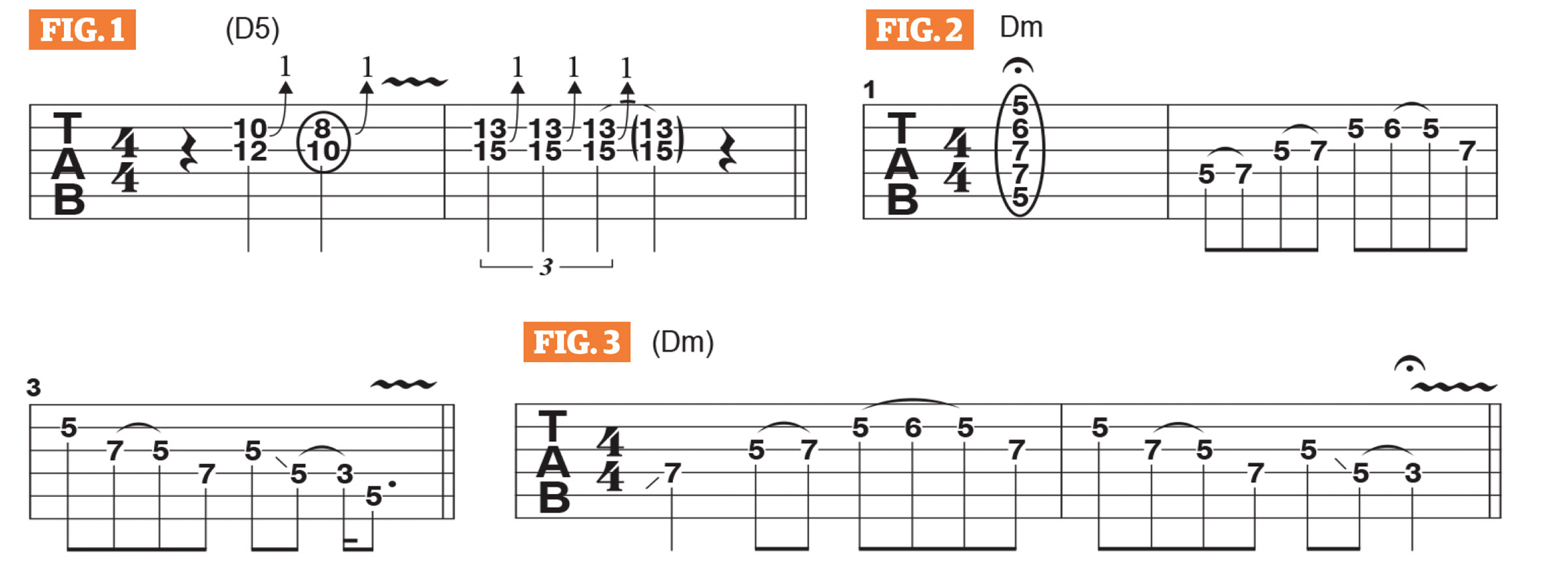“I love to utilize unison bends, inspired by players like Ted Nugent, Pat Travers and Johnny Winter”: Jared James Nichols shows you how to build a guitar solo to a powerful climax
Ditch the pick and crank the amp for this Jared James Nichols masterclass in blues solo composition
Last time, I demonstrated my approach to soloing over the song Hard Wired, originally released on my 2023 self-titled album. We began with the breakdown section, over which I play simple lines over the D - F - G chord progression before moving into the heavy D minor pentatonic-based (D, F, G, A, C) “theme riff,” over which the main solo is played.
Once that riff is established, I begin the proper solo with some Jimi Hendrix-inspired dominant 7 triads that are tremolo-picked and slid up and down the neck, à la Voodoo Child (Slight Return).
In this lesson, I’d like to discuss what I play next and why. After that, I love to utilize unison bends, which are inspired by players like Ted Nugent, Pat Travers and Johnny Winter.
As shown in Figure 1, I play a series of unison bends on the B and G strings by fretting the primary note on the B string and bending up to that same pitch from a whole step below on the G string, two frets higher.
The initial unison bend is performed by fretting an A note on the B string’s 10th fret while bending a G note up a whole step to A at the 12th fret on the G string.
I then move the unison bend shape down a whole step – two frets – to sound a G unison bend, followed by a move up two and a half steps to a C unison bend at the 13th and 15th frets. Be sure to add some hearty vibrato on the G string to any unison bend that‘s allowed to sustain.
After this series of unison bends, I like to move into sequences, which are phrases that ascend or descend in a specific manner, that I will move to different areas of the fretboard.
All the latest guitar news, interviews, lessons, reviews, deals and more, direct to your inbox!
As shown in Figures 2 and 3, over a Dm chord, I like to move up and down the D minor pentatonic scale (D, F, G, A, C) with the inclusion of the 2nd, or 9th, E, articulating the line with an abundance of hammer ons, pull offs and finger slides.
The solo section is played at a slow tempo with a heavy feel, so it sounds great to ramp up the intensity by playing these sequences in a rhythm of 16th notes, as shown in Figure 4.
With a fast phrase like this, a little bit of palm muting is very helpful in cleaning up the articulation and making each note sound more distinct. I’ll often jump up an octave to play the same phrase, as shown in Figure 5.
I think of these phrases as being “efficient” because the contour of the melody is so specific, which is something I learned from listening to Johnny Winter.
In Figure 6, I play a similar phrase, also based on D minor pentatonic with the inclusion of the 2nd/9th, E, but played here in a slower rhythm of eighth notes and in 10th position.
In Figure 7, I double it up by playing the phrase in 16th notes.
Phrases like these, which are so specific melodically, work very well against more aggressive, off-the-cuff playing. It’s like a game of “cat and mouse,” where each approach compliments the other very well.
Any “country-style” sounds will work great here, too. Since we-re tuned to drop D, I’ll strike the open low D string and play two-note Figures, 3rds apart, adding subtle bends, as in Figure 8.
Licks like these add a raunchy flavor with a great bluesy undertone.
- This article first appeared in Guitar World. Subscribe and save.
Jared James Nichols is a blues-rock guitarist with two signature Epiphone Les Paul models (and a Blackstar amp) to his name. His latest album is 2023's Jared James Nichols.
You must confirm your public display name before commenting
Please logout and then login again, you will then be prompted to enter your display name.







